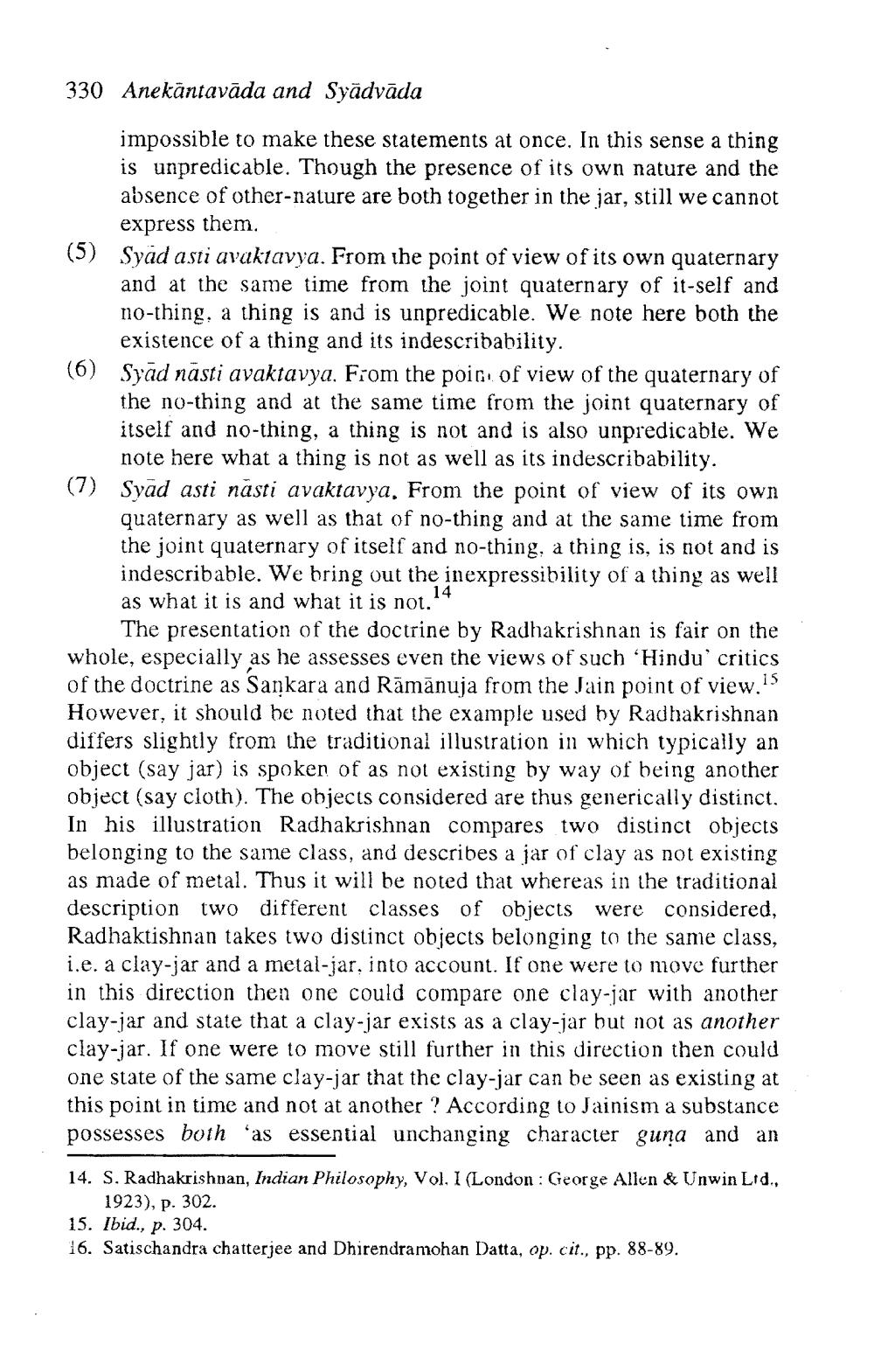________________
330 Anekantavāda and Syädvāda
impossible to make these statements at once. In this sense a thing is unpredicable. Though the presence of its own nature and the absence of other-nature are both together in the jar, still we cannot express them. Syad asti avaktavya. From the point of view of its own quaternary and at the same time from the joint quaternary of it-self and no-thing, a thing is and is unpredicable. We note here both the
existence of a thing and its indescribability. (6) Syad nästi avaktavya. From the poin of view of the quaternary of
the no-thing and at the same time from the joint quaternary of itself and no-thing, a thing is not and is also unpredicable. We
note here what a thing is not as well as its indescribability. (7) Syad asti nästi avaktavya. From the point of view of its own
quaternary as well as that of no-thing and at the same time from the joint quaternary of itself and no-thing, a thing is, is not and is indescribable. We bring out the inexpressibility of a thing as well as what it is and what it is not.'*
The presentation of the doctrine by Radhakrishnan is fair on the whole, especially as he assesses even the views of such 'Hindu' critics of the doctrine as Sankara and Rāmānuja from the Jain point of view.is However, it should be noted that the example used hy Radhakrishnan differs slightly from the traditional illustration in which typically an object (say jar) is spoken of as not existing by way of being another object (say cloth). The objects considered are thus generically distinct. In his illustration Radhakrishnan compares two distinct objects belonging to the same class, and describes a jar of clay as not existing as made of metal. Thus it will be noted that whereas in the traditional description two different classes of objects were considered, Radhaktishnan takes two distinct objects belonging to the same class, i.e. a clay-jar and a metal-jar, into account. If one were to move further in this direction then one could compare one clay-jar with another clay-jar and state that a clay-jar exists as a clay-jar but not as another clay-jar. If one were to move still further in this direction then could one state of the same clay-jar that the clay-jar can be seen as existing at this point in time and not at another ? According to Jainism a substance possesses both as essential unchanging character guna and an
14. S. Radhakrishnan, Indian Philosophy, Vol. I (London: George Allen & Unwin Lid.,
1923), p. 302. 15. Ibid., p. 304. 16. Satischandra chatterjee and Dhirendramohan Datta, op. cit., pp. 88-89.




